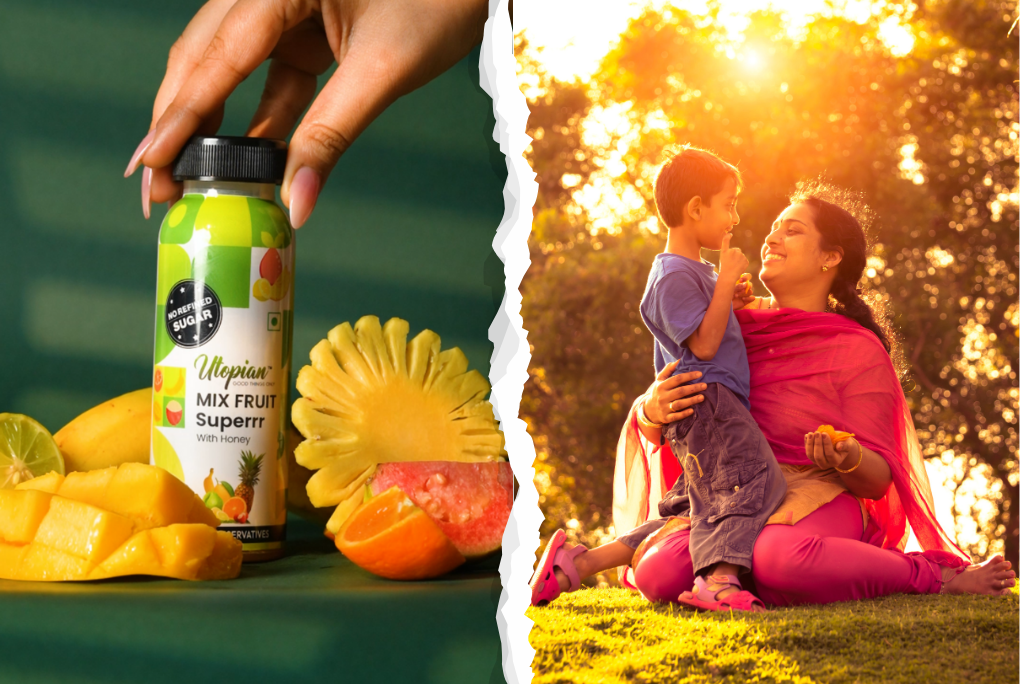
When Summer Makes You Thirsty (and Not Just for Water)
Beyond H2O: Summer Satisfaction
When Summer Makes You Thirsty (and Not Just for Water)
How we end up drinking our calories and why ‘Better-for-You’ matters more than ever
In India, summer isn’t a season—it’s a challenge. The kind of heat that makes your shirt stick, power grids wobble, and your fridge door open ten times more a day. But here’s the thing we don’t always notice: when temperatures soar, so do our calorie intakes. Not because we’re eating more. But because we’re drinking more—and not always the good stuff.
While you’re trying to beat the heat, you’re also likely sipping your way through sugar. A 300ml cola can easily clock over 130 calories. Add a couple of those on a hot day, and you’ve already consumed more than a small meal’s worth of calories—without the nutrients, or the satiety.
According to the National Institute of Nutrition, India, the average adult requires 2,000–2,400 calories a day (depending on activity). A few sugary drinks scattered through the day can easily account for 15–20% of that. And the tricky part? You don’t even notice it. You weren’t hungry. You were just thirsty.
The Rise of Low-Calorie, Non-Alcoholic Drinks in India
There’s been a quiet shift in what’s showing up in our fridges and coolers. As more Indians look for health-conscious choices, a new category is growing: low calorie drinks that are non-alcoholic, flavourful, and don’t taste like regret. A NielsenIQ study from 2023 showed a 23% YoY rise in demand for functional, ‘cleaner label’ beverages across urban India. That’s a real change—not just on social media but in supermarkets and kirana shops too.
At the heart of this shift is a new consumer mindset—one that wants “Better-for-You” products. Not clinical. Not joyless. Just less junk.
But What Does “Better-for-You” Really Mean?
It’s a term that gets thrown around a lot, so let’s get into it. In the Indian context, where traditional drinks like aam panna, nimbu pani, and kokum sherbet already offer cooling properties, there’s no need to invent the wheel. But what’s changing is how people want these drinks—cleaner, transparent, and easy on the sugar.
Better-for-you drinks typically offer:
- Lower sugar or no sugar at all
This isn’t about artificial sweeteners. It’s about rethinking the drink altogether. Like using fruit pulp or naturally sweet ingredients instead of just masking bitterness with sugar. - Low-calorie options that don’t taste like cardboard
Because a drink can be healthy and still feel like a treat. Texture and flavour still matter. - Functional ingredients with real benefits
Think natural Vitamin C, prebiotic fibres, and hydration-boosting elements—without sounding like a pharma label.
What’s Wrong With What’s Already in the Market?
Let’s not beat around the bottle—most packaged drinks in India (and globally) are still loaded with sugar or artificial ingredients. Even drinks that scream “natural” or “fruit-based” often come with added sweeteners, concentrates, or preservatives. And the calorie count? It’s often tucked into fine print.
The trouble is, that stuff adds up. A study by the Indian Council of Medical Research (ICMR) showed that sugary beverages contributed to the rise in metabolic disorders among urban youth aged 15–35. It’s not the drink. It’s the frequency. And the blind spots in our habits.

A New Player with Familiar Priorities
Now, before you roll your eyes—this isn’t a sales pitch. But let’s acknowledge something: when Utopian Drinks showed up on Shark Tank India, it wasn’t just another beverage brand. It was a proof point for what’s possible. That clean-label, no sugar juices could have an audience. That better-for-you doesn’t mean boring-for-you. And that even kids could enjoy something off the shelf that doesn’t come with a long list of additives.
Their range has options like smoothies made from real fruit pulp and cold-pressed juices with no added sugars—without pretending to be anything they’re not. They’re not trying to make you fit. They’re just trying not to fool you.
So How Do You Choose Better?
Simple. Next time you’re at the fridge or scrolling through a grocery app, flip the bottle and look at three things:
- Calories per serving
Anything over 100 for a 250ml drink, and you’re probably sipping dessert. - Sugar content (and how much is added)
Natural fruit sugars? Fine. Added glucose syrup or fructose? Maybe not. - Ingredient list
If you can pronounce all the ingredients, you’re on the right track.
India’s heat isn’t going anywhere. But maybe our summer drinks can evolve a little.
Better-for-you isn’t a fad. It’s just common sense with a label. So whether you’re sipping after a workout, packing school tiffins, or just need something refreshing between Zoom calls, choose something that cools you down without weighing you down.
Utopian or not—drinks can be made right.









